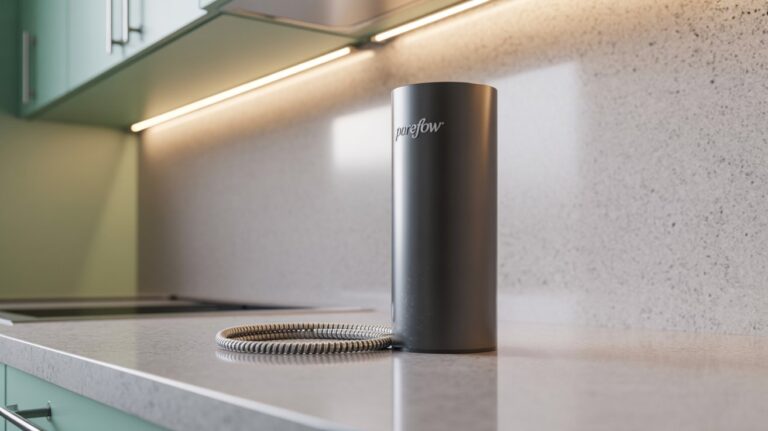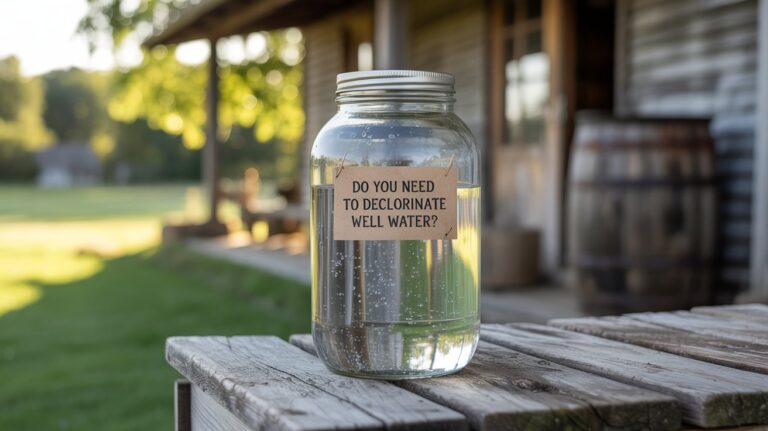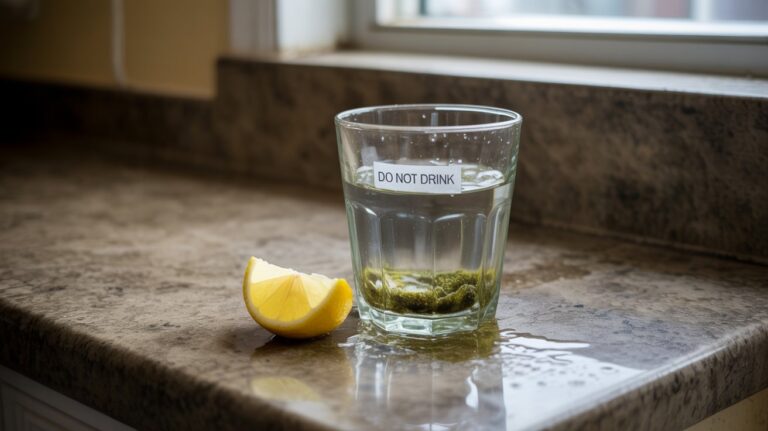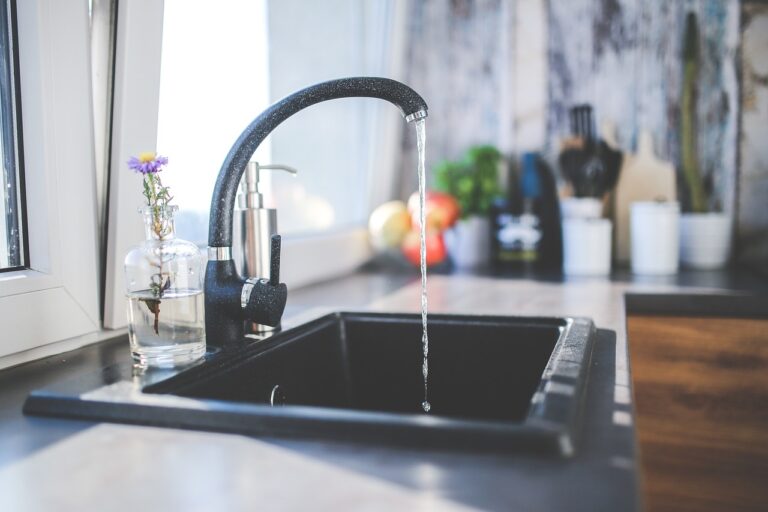Reverse Osmosis: Effective at Removing Pesticides?
Did you know that millions of people worldwide are exposed to water contaminated with pesticides, posing serious health risks? Water purification is crucial, and one effective method is Reverse Osmosis (RO), a process known for its ability to remove a wide range of contaminants from water.
RO treatment involves forcing water through a semi-permeable membrane, which filters out impurities, including dissolved solids, bacteria, and other harmful substances. This makes RO a potentially effective solution for removing pesticides from drinking water.
Key Takeaways
- Reverse Osmosis is a water purification process.
- RO is effective at removing various contaminants.
- Pesticides are among the contaminants that RO can potentially remove.
- The process involves a semi-permeable membrane.
- RO treatment can improve the safety of drinking water.
Understanding Pesticide Contamination in Water
Water pollution due to pesticides is a critical problem that affects human health. Pesticide contamination in water sources is a widespread issue that has garnered significant attention in recent years. The presence of these chemicals in drinking water poses serious health risks to consumers.
Common Pesticides Found in Drinking Water
Several types of pesticides have been detected in drinking water supplies. Common contaminants include Endrin, Heptachlor, Lindane, and Pentachlorophenol. These chemicals are used in agriculture and other industries, and their presence in water sources is often a result of improper disposal or agricultural runoff.
| Pesticide | Common Use |
|---|---|
| Endrin | Insecticide |
| Heptachlor | Insecticide |
| Lindane | Insecticide |
| Pentachlorophenol | Fungicide, Wood Preservative |
Sources of Pesticide Contamination
The sources of pesticide contamination in water are varied. Agricultural runoff is a significant contributor, as pesticides used in farming can leach into nearby water sources. Industrial waste and improper disposal of pesticides also play a substantial role in contaminating water supplies.
“The improper disposal of pesticides has led to significant environmental pollution, affecting both surface and groundwater sources.”
Health Risks Associated with Pesticide Exposure
Exposure to pesticides through contaminated drinking water has been linked to various health issues. These include increased risks of cancer, neurological disorders, and reproductive problems. The health impacts of pesticide exposure underscore the importance of removing these contaminants from drinking water.
Reverse osmosis is one effective method for removing pesticides from water. By understanding the sources and health risks associated with pesticide contamination, we can better appreciate the need for effective water filtration systems.
What is Reverse Osmosis?
Reverse osmosis is a technology used to purify water by applying pressure to force it through a semi-permeable membrane. This process is effective in removing a wide range of contaminants, including pesticides, from drinking water.
The Science Behind Reverse Osmosis
The science behind reverse osmosis is based on the principle of osmosis, where water moves from an area of high concentration to an area of low concentration through a semi-permeable membrane. By applying pressure, reverse osmosis reverses this process, forcing water through the membrane and leaving contaminants behind.
Semi-permeable membranes used in reverse osmosis have tiny pores that allow water molecules to pass through while blocking larger particles and impurities. This results in clean and purified water.
Components of a Reverse Osmosis System
A typical reverse osmosis system consists of several key components:
- Pre-filters: Remove larger particles and contaminants before the water reaches the RO membrane.
- RO Membrane: The semi-permeable membrane that filters out impurities.
- Post-filters: Further purify the water after it passes through the RO membrane.
- Storage Tank: Holds the purified water until it is needed.
Different Types of RO Systems Available
There are various types of reverse osmosis systems available, catering to different needs and applications:
| Type of RO System | Description | Application |
|---|---|---|
| Point-of-Use (POU) | Installed under the sink or on the countertop. | Residential drinking water |
| Point-of-Entry (POE) | Installed at the main water line. | Whole-house water filtration |
| Portable RO Systems | Compact and movable. | Camping, RVs, or emergency use |
Each type of RO system has its unique benefits and is suited for different situations, ensuring that there is a reverse osmosis solution for various needs.
How Reverse Osmosis Works
Understanding how reverse osmosis works is essential to appreciating its effectiveness in removing pesticides and other contaminants from drinking water. Reverse osmosis (RO) is a complex water purification process that involves several key stages to ensure the removal of various contaminants.
The Filtration Process Explained
The filtration process in RO involves forcing water through a semi-permeable membrane, which blocks contaminants. The membrane’s pore size determines its effectiveness in removing different contaminants. This process is crucial for removing pesticides, which can be harmful to human health.
The RO process starts with pre-filtration, where larger particles and sediments are removed. This step is essential to protect the semi-permeable membrane from damage and ensure its longevity.
The Semi-Permeable Membrane’s Role
The semi-permeable membrane is the heart of the RO system. Its pore size is designed to allow water molecules to pass through while blocking larger contaminants, including pesticides. The effectiveness of the membrane in removing contaminants depends on its quality and maintenance.
| Membrane Pore Size | Contaminant Removal | Effectiveness |
|---|---|---|
| 0.0001 microns | Pesticides, bacteria, viruses | High |
| 0.001 microns | Heavy metals, dissolved solids | Medium to High |
Pre and Post Filtration Stages
Pre-filtration removes larger particles, protecting the semi-permeable membrane. Post-filtration, on the other hand, involves additional filters that remove any remaining impurities, ensuring the water is clean and safe to drink.
In conclusion, the reverse osmosis process is a multi-stage filtration method that effectively removes contaminants, including pesticides, from drinking water. Understanding the role of the semi-permeable membrane and the pre and post-filtration stages is crucial to appreciating the effectiveness of RO systems.
Can Reverse Osmosis Remove Pesticides?
Studies have consistently demonstrated that reverse osmosis systems can effectively remove a wide range of pesticides from water. This method of water purification has gained attention for its ability to eliminate various contaminants, including pesticides, making drinking water safer.
Scientific Evidence and Studies
Numerous studies have investigated the efficacy of reverse osmosis in removing pesticides. Research indicates that reverse osmosis can remove up to 99% of certain pesticides, depending on the type and the condition of the RO membrane. For instance, a study published in the Journal of Water Research found that reverse osmosis systems achieved significant removal rates for pesticides like atrazine and glyphosate.
Key findings from scientific studies:
- Reverse osmosis can remove a wide range of pesticide types, including herbicides, insecticides, and fungicides.
- The effectiveness of pesticide removal can vary based on the membrane used and its condition.
- Pre-treatment stages can enhance the overall efficiency of pesticide removal.

Removal Rates for Different Pesticide Types
The removal rate of pesticides by reverse osmosis varies depending on the pesticide type and the characteristics of the RO membrane. The following table summarizes removal rates for common pesticides:
| Pesticide Type | Removal Rate (%) |
|---|---|
| Atrazine | 95-99 |
| Glyphosate | 90-98 |
| 2,4-D | 85-95 |
| Chlorpyrifos | 80-92 |
Factors Affecting Pesticide Removal Efficiency
Several factors can influence the efficiency of pesticide removal by reverse osmosis systems. These include:
- Membrane condition: The age and maintenance of the RO membrane can significantly impact its effectiveness.
- Water pressure: Adequate water pressure is necessary for the RO system to function optimally.
- Temperature: Water temperature can affect the viscosity and flow rate through the membrane, impacting removal efficiency.
Understanding these factors is crucial for maximizing the pesticide removal capabilities of reverse osmosis systems.
Types of Pesticides Effectively Filtered by RO
Pesticide contamination in water sources is a significant concern, and reverse osmosis has emerged as a reliable solution. Reverse osmosis (RO) systems have been shown to effectively remove a variety of pesticides, ensuring safer drinking water.
RO technology is particularly effective against several categories of pesticides, including herbicides, insecticides, and fungicides. The semi-permeable membrane used in RO systems is capable of filtering out these contaminants due to their molecular size and structure.
Herbicides
Herbicides such as Atrazine, Glyphosate, and 2,4-D are commonly found in agricultural runoff and can contaminate water sources. Reverse osmosis systems have demonstrated a high removal rate for these herbicides, making them a reliable choice for households concerned about these contaminants. Studies have shown that RO systems can remove up to 99% of these herbicides, significantly improving water quality.
Insecticides
Insecticides like Chlorpyrifos and Malathion are used to control pests but can also end up in water supplies. RO systems have been proven effective in removing these insecticides, thus reducing the risk of exposure to harmful chemicals. The effectiveness of RO in removing insecticides is attributed to the membrane’s ability to filter out small molecules.
Fungicides and Other Agricultural Chemicals
Fungicides and other agricultural chemicals can also be removed by RO systems. These chemicals, often used in farming to protect crops, can contaminate water sources through runoff. The versatility of RO technology in removing a broad spectrum of pesticides makes it a valuable tool in ensuring drinking water safety.
In conclusion, reverse osmosis is a highly effective method for removing various types of pesticides from water, including herbicides, insecticides, and fungicides. By understanding the capabilities of RO systems, households can make informed decisions about their drinking water quality.
Limitations of Reverse Osmosis in Pesticide Removal
The effectiveness of reverse osmosis in removing pesticides can be influenced by various factors, including the type of pesticide and system conditions. While reverse osmosis is a powerful tool for water purification, understanding its limitations is crucial for assessing its capability in removing pesticides.
Molecular Size Considerations
One significant limitation is related to the molecular size of the pesticides. Reverse osmosis membranes have pores of specific sizes, and if a pesticide molecule is smaller than these pores, it may not be effectively removed. Pesticides with smaller molecular sizes can pass through the membrane, reducing the system’s efficiency.
System Efficiency Factors
The efficiency of a reverse osmosis system in removing pesticides is also affected by operational factors such as water pressure, temperature, and the condition of the membrane. Lower water pressure or higher temperatures can compromise the system’s ability to remove contaminants. Regular maintenance is essential to ensure optimal performance.
Water Wastage and Environmental Concerns
Another limitation of reverse osmosis systems is the significant amount of water wasted during the filtration process. For every gallon of purified water produced, several gallons can be wasted, depending on the system’s efficiency. This wastage has environmental implications, particularly in areas where water is scarce. Efforts to improve the efficiency of RO systems and reduce waste are ongoing.
In conclusion, while reverse osmosis is a valuable method for removing pesticides from water, its effectiveness is subject to several limitations. Understanding these limitations is key to optimizing the use of RO systems for water purification.
Comparing Reverse Osmosis to Other Filtration Methods
Reverse osmosis stands out as a highly effective water purification technique, but how does it compare to other methods? When considering water filtration systems, it’s essential to evaluate the strengths and weaknesses of each technology to determine the best fit for your needs.
Activated Carbon Filtration
Activated carbon filtration is a popular method for removing chlorine, taste, and odor from water. It can also capture some volatile organic compounds (VOCs) and certain pesticides. However, its effectiveness is limited by the type of activated carbon used and the contact time between the water and the carbon.
UV Purification
UV purification uses ultraviolet light to kill bacteria, viruses, and other microorganisms. While it’s highly effective against microbial contaminants, UV light does not remove dissolved solids or chemical contaminants like pesticides.
Distillation
Distillation involves boiling the water and then collecting the condensed steam, which is free from many contaminants. Distillation can remove a wide range of impurities, including dissolved solids and some pesticides. However, it can be energy-intensive and may not remove all volatile compounds.
Combination Systems for Maximum Protection
For comprehensive water purification, combination systems that integrate multiple technologies, such as reverse osmosis, activated carbon, and UV purification, can offer the best protection. These systems can remove a broad spectrum of contaminants, including pesticides, heavy metals, bacteria, and viruses.
| Filtration Method | Effectiveness Against Pesticides | Other Benefits |
|---|---|---|
| Reverse Osmosis | Highly effective | Removes dissolved solids, heavy metals |
| Activated Carbon | Moderately effective | Improves taste and odor, removes chlorine |
| UV Purification | Not effective | Kills bacteria and viruses |
| Distillation | Highly effective | Removes a wide range of impurities |
| Combination Systems | Highly effective | Comprehensive protection against various contaminants |
In conclusion, while reverse osmosis is highly effective in removing pesticides, other filtration methods have their own strengths and weaknesses. The choice of filtration system depends on the specific contaminants present in the water and the desired level of purification. Combination systems offer a robust solution for achieving comprehensive water quality.
Real-World Performance: Case Studies and Testing
To determine the real-world effectiveness of reverse osmosis in pesticide removal, it’s crucial to examine the results of independent laboratory tests and consumer reports. Reverse osmosis technology has been widely studied and implemented to address the issue of pesticide contamination in drinking water.

Independent Laboratory Testing Results
Independent laboratory testing has shown that reverse osmosis systems can effectively remove pesticides from water. These tests typically involve spiking water samples with known concentrations of pesticides and then measuring the concentration after passing through an RO system.
Studies have consistently demonstrated that RO systems can achieve significant removal rates for a wide range of pesticides, including herbicides, insecticides, and fungicides.
Consumer Reports and Feedback
Consumer reports and feedback also support the effectiveness of RO systems in removing pesticides. Many users have reported a noticeable improvement in water taste and quality after installing an RO system.
Furthermore, consumer satisfaction surveys often highlight the peace of mind that comes with knowing their drinking water is free from harmful contaminants like pesticides.
EPA and Water Quality Standards
RO systems can help meet EPA and other water quality standards by effectively removing contaminants, including pesticides. The EPA sets maximum allowable levels for various contaminants in drinking water, and RO systems can play a crucial role in ensuring compliance with these standards.
By removing a broad spectrum of contaminants, RO systems provide a comprehensive solution for improving drinking water quality.
Installing and Maintaining a Reverse Osmosis System
Installing and maintaining a reverse osmosis system correctly is vital for its efficiency in pesticide removal. A well-installed and properly maintained system ensures the removal of pesticides and other contaminants, providing safe drinking water.
Installation Considerations and Process
When installing a reverse osmosis system, several factors must be considered to ensure optimal performance. The location of the system, the quality of the installation, and the type of RO membrane used are critical. The installation process typically involves connecting the system to the water supply line, ensuring proper drainage, and configuring the system according to the manufacturer’s instructions.
Key installation considerations include:
- Choosing a suitable location for the system
- Ensuring adequate water pressure
- Following the manufacturer’s installation guidelines
Maintenance Requirements for Optimal Performance
Regular maintenance is essential to keep the reverse osmosis system functioning effectively. This includes replacing filters and membranes at recommended intervals, typically every 6 to 12 months, depending on usage and water quality.
| Maintenance Task | Frequency | Importance |
|---|---|---|
| Replace Pre-Filters | Every 6 months | High |
| Replace RO Membrane | Every 12-24 months | High |
| Check System for Leaks | Monthly | Medium |
Troubleshooting Common Issues
Despite proper installation and maintenance, issues can arise. Common problems include reduced water flow, taste or odor issues, and system leaks. Troubleshooting these issues promptly can prevent more significant problems.
Common issues and their solutions:
- Reduced water flow: Check and replace clogged pre-filters or membranes.
- Taste or odor issues: Inspect the system for contamination or replace the activated carbon filter.
- System leaks: Tighten loose connections or replace damaged parts.
By following these guidelines for installation, maintenance, and troubleshooting, you can ensure your reverse osmosis system effectively removes pesticides and provides clean drinking water.
Conclusion
Reverse osmosis has proven to be a highly effective method for removing pesticides from water, providing a reliable solution for households seeking clean drinking water. By understanding how reverse osmosis systems work and their capabilities, homeowners can make informed decisions about their water purification needs.
The process of reverse osmosis purification of pesticides involves a semi-permeable membrane that filters out contaminants, including various types of pesticides. This technology has been shown to be effective in removing herbicides, insecticides, and fungicides, making it a comprehensive solution for water purification.
When considering a water purification system, it’s essential to evaluate the effectiveness of different technologies. Reverse osmosis and pesticides removal is a well-documented process, with numerous studies supporting its efficacy. By choosing a reverse osmosis system, households can enjoy clean and safe drinking water, free from the risks associated with pesticide exposure.







